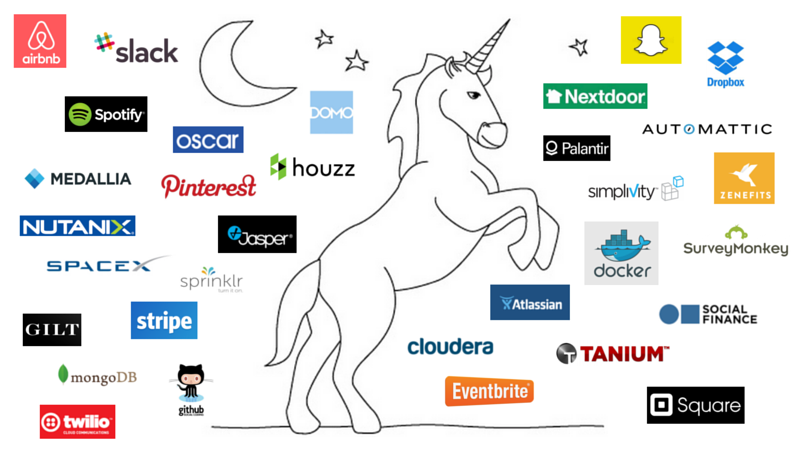Unfortunately, this blog post is not about those cute, legendary creatures called unicorns. Instead, I refer to start-up companies, those valued at over 1$ billion. As this article was not part of the required readings of session four, I will summarize it before criticizing.
The term ‘unicorn’ is a little bit outdated, as Aileen Lee came up with it in 2013. As only 39 start-ups (valued at over 1 billion dollar) existed back then, it was a perfect fitting term. In 2015, already 80 of these firms existed, for example snapchat, which had a $19 billion valuation. Reasons for this growth goes from big corporate buys to technological advances to the growing costs and bother of going public (Howe, 2015). Will Gen-X business leaders (1965-1984) be able to avoid the pitfalls that the Boomers (20 years before Gen-X) had faced, leading to the dot-com crash?
Unicorns have become normal, and a new measure of exclusivity is the “decacorn”, which is a start-up worth at over $10 billion. In 2015, already eight of them existed, such as Uber and Airbnb. On the supply end, massive investor spending has led to this growth, such as Venture Capitalists (VCs) and investment firms. Their main reason is the larger return, as the start-ups are riskier. On the other end, big tech moneys simply have more money than in the past, which they hope to spend on big buyouts of start-ups. These cash reserves are thanked to slow-growth, low-interest rate environments, together with small enthusiasm (by Facebook and Apple for example) for capex investing.
Another advantage for the tech start-ups nowadays is the ability to use the massive economies of scale of social media to reach millions, while only paying a handful of salaries and avoiding costly overhead. Moreover, plenty of unicorns choose to stay private, because of though regulations for newly-public companies. Recent development has also made it simpler and more cost-effective to stay private.
The term unicorn better describes the current macroeconomic landscape, where there is a zero-interest rate without the threat of recession. Some argue that those start-ups may boom in value, but entrepreneurship in the rest of the economy is declining, together with not virtually adding anything to the workforce. As many start-ups are burning through their cash, a threat arises when the market cools, and only the most efficient, agile and revolutionary companies will be able to survive. This will be a repetition of the dot-com crash.
I assume that I belong to the optimists for this scenario, as the network effects build by those ‘unicorns’, or even ‘decacorns’, have such an advantage compared to those companies during the dot-com bubble. However, the companies need to understand the challenges they are facing, such as pricing, winner-take-all and envelopment (Eisenmann et al., 2006).
Sources:
Eisenmann, T., Parker, G., and Van Alstyne, M.W. (2006). Strategies for Two-Sided Markets. Harvard Business Review 84(10) 92-101.
Howe, N. (2015). What’s Feeding The Growth Of The Billion-Dollar ‘Unicorn’ Startups? March 18, 2015. Forbes.com. Available at: http://www.forbes.com/sites/neilhowe/2015/03/18/whats-feeding- the-growth-of-the-billion-dollar-unicorn-startups/#3c6a108b6c96.

